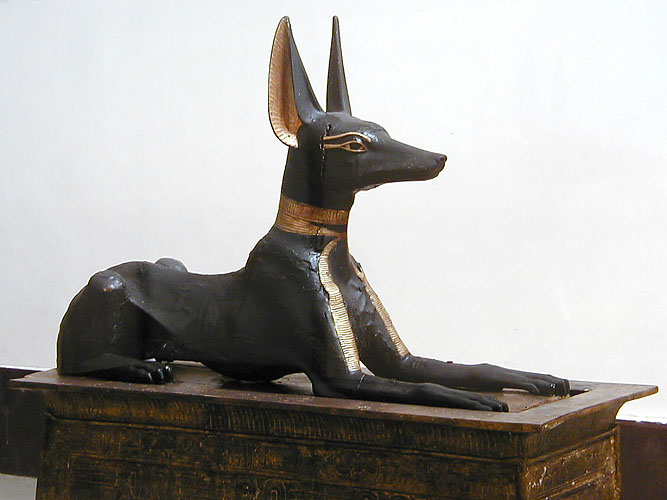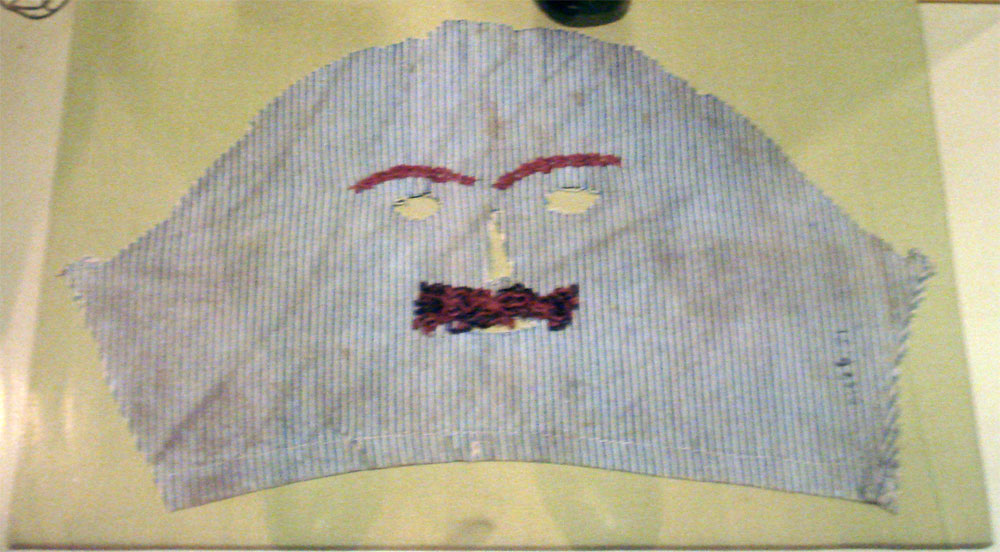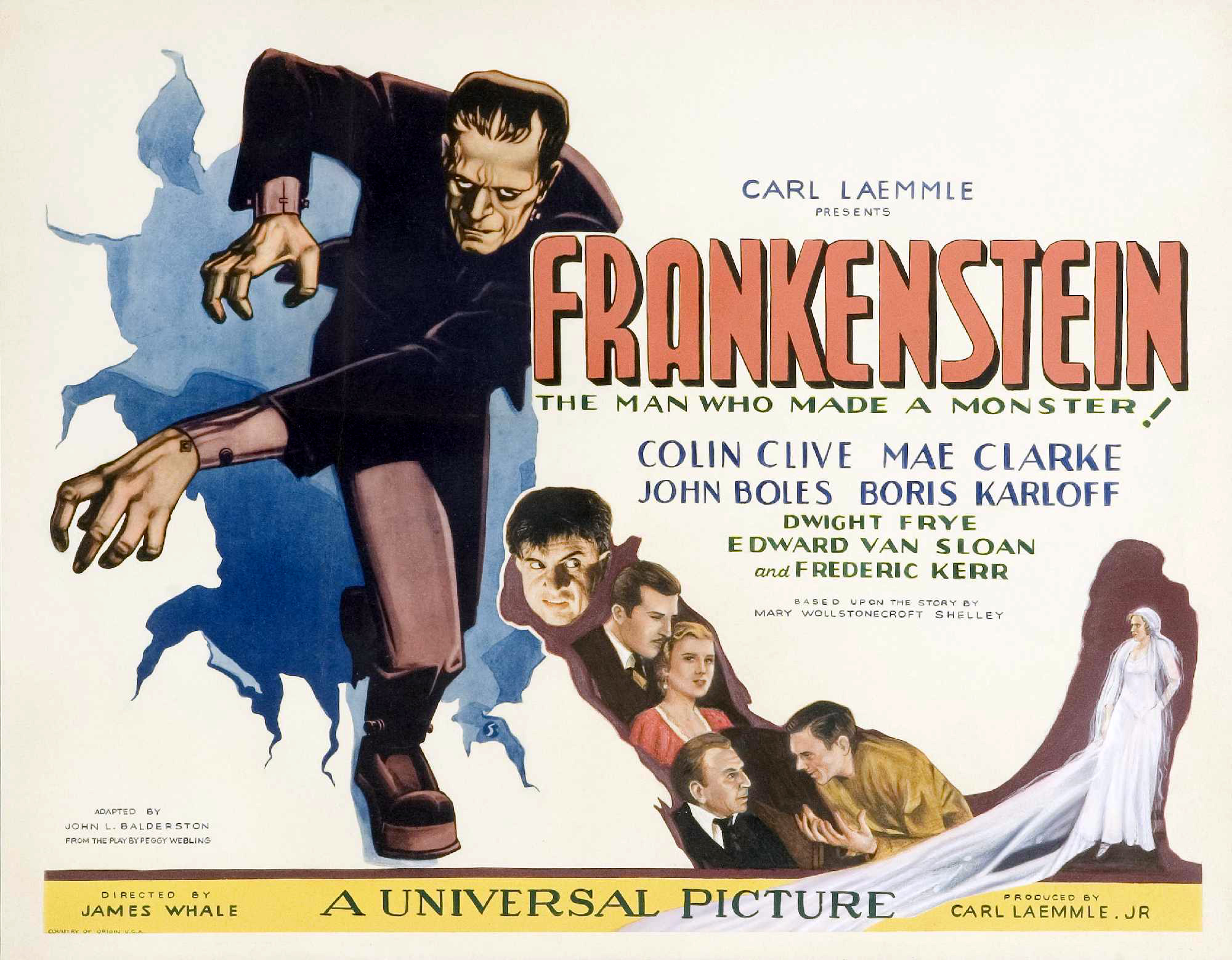|
The Mummy (1932 Film)
''The Mummy'' is a 1932 American pre-Code supernatural horror film directed by Karl Freund. The screenplay by John L. Balderston was adapted from a treatment written by Nina Wilcox Putnam and Richard Schayer. Released by Universal Studios as a part of the Universal Monsters franchise, the film stars Boris Karloff, Zita Johann, David Manners, Edward Van Sloan and Arthur Byron. In the film, Karloff stars as Imhotep, an ancient Egyptian mummy who was killed for attempting to resurrect his dead lover, Anck-es-en-Amon. After being discovered and accidentally brought to life by a team of archaeologists, he disguises himself as a modern Egyptian named Ardath Bey and searches for Anck-es-en-Amon, who he believes has been reincarnated in the modern world. While less profitable than its predecessors ''Dracula'' and ''Frankenstein'', ''The Mummy'' was still a commercial and critical success, becoming culturally influential and spawning several sequels, spin-offs, remakes, and re ... [...More Info...] [...Related Items...] OR: [Wikipedia] [Google] [Baidu] |
Karoly Grosz (illustrator)
Karoly Grosz ( , ; ; March 9, 1897 – May 14, 1952) was a Hungarian Americans, Hungarian–American illustrator of Classical Hollywood cinema, Classical Hollywood–era film posters. As art director at Universal Pictures for the bulk of the 1930s, Grosz oversaw the company's advertising campaigns and contributed hundreds of his own illustrations. He is especially recognized for his dramatic, colorful posters for classic horror films. Grosz's best-known posters advertised early Universal Classic Monsters films such as ''Dracula (1931 English-language film), Dracula'' (1931), ''Frankenstein (1931 film), Frankenstein'' (1931), ''The Mummy (1932 film), The Mummy'' (1932), ''The Invisible Man (1933 film), The Invisible Man'' (1933), and ''Bride of Frankenstein'' (1935). Beyond the horror genre, his other notable designs include posters for the epic war film ''All Quiet on the Western Front (1930 film), All Quiet on the Western Front'' (1930) and the screwball comedy ''My Man Godfrey ... [...More Info...] [...Related Items...] OR: [Wikipedia] [Google] [Baidu] |
Universal Monsters
The Universal Monsters (also known as Universal Classic Monsters and Universal Studios Monsters) is a media franchise comprising various horror film series distributed by Universal Pictures. It consists of different horror creature characters originating from various novels, such as Dr. Jekyll and Mr. Hyde (character), Dr. Jekyll / Mr. Hyde, Erik (The Phantom of the Opera), the Phantom of the Opera, Count Dracula, Frankenstein's monster, Imhotep (The Mummy), the Mummy, and Griffin (The Invisible Man), the Invisible Man, as well as original characters Larry Talbot, the Wolf Man and the Gill-man, Creature from the Black Lagoon. The original series began with ''Dr. Jekyll and Mr. Hyde (1913 film), Dr. Jekyll and Mr. Hyde'' (1913) and ended with ''The Creature Walks Among Us'' (1956). While the early installments were initially created as stand-alone films based on published novels, their financial and critical success resulted in various cross-over releases between the monsters, as ... [...More Info...] [...Related Items...] OR: [Wikipedia] [Google] [Baidu] |
Curse Of The Pharaohs
The curse of the pharaohs or the mummy's curse is a curse alleged to be cast upon anyone who disturbs the mummy of an ancient Egyptian, especially a pharaoh. This curse, which does not differentiate between thieves and archaeologists, is claimed to cause bad luck, illness, or death. Since the mid-20th century, many authors and documentaries have argued that the curse is 'real' in the sense of having scientifically explicable causes such as bacteria, fungi or radiation. However, the modern origins of Egyptian mummy curse tales, their development primarily in European cultures, the shift from magic to science to explain curses, and their changing uses—from condemning disturbance of the dead to entertaining horror film audiences—suggest that Egyptian curses are primarily a cultural, not scientific, phenomenon. There are occasional instances of genuine ancient curses appearing inside or on the façade of a tomb, as in the case of the mastaba of Khentika Ikhekhi of the 6th Dynast ... [...More Info...] [...Related Items...] OR: [Wikipedia] [Google] [Baidu] |
Viscera
In a multicellular organism, an organ is a collection of tissues joined in a structural unit to serve a common function. In the hierarchy of life, an organ lies between tissue and an organ system. Tissues are formed from same type cells to act together in a function. Tissues of different types combine to form an organ which has a specific function. The intestinal wall for example is formed by epithelial tissue and smooth muscle tissue. Two or more organs working together in the execution of a specific body function form an organ system, also called a biological system or body system. An organ's tissues can be broadly categorized as parenchyma, the functional tissue, and stroma, the structural tissue with supportive, connective, or ancillary functions. For example, the gland's tissue that makes the hormones is the parenchyma, whereas the stroma includes the nerves that innervate the parenchyma, the blood vessels that oxygenate and nourish it and carry away its metabolic ... [...More Info...] [...Related Items...] OR: [Wikipedia] [Google] [Baidu] |
Ancient Egypt
Ancient Egypt () was a cradle of civilization concentrated along the lower reaches of the Nile River in Northeast Africa. It emerged from prehistoric Egypt around 3150BC (according to conventional Egyptian chronology), when Upper and Lower Egypt were amalgamated by Menes, who is believed by the majority of List of Egyptologists, Egyptologists to have been the same person as Narmer. The history of ancient Egypt unfolded as a series of stable kingdoms interspersed by the "Periodization of ancient Egypt, Intermediate Periods" of relative instability. These stable kingdoms existed in one of three periods: the Old Kingdom of Egypt, Old Kingdom of the Early Bronze Age; the Middle Kingdom of Egypt, Middle Kingdom of the Middle Bronze Age; or the New Kingdom of Egypt, New Kingdom of the Late Bronze Age. The pinnacle of ancient Egyptian power was achieved during the New Kingdom, which extended its rule to much of Nubia and a considerable portion of the Levant. After this period, Egypt ... [...More Info...] [...Related Items...] OR: [Wikipedia] [Google] [Baidu] |
Archaeology
Archaeology or archeology is the study of human activity through the recovery and analysis of material culture. The archaeological record consists of Artifact (archaeology), artifacts, architecture, biofact (archaeology), biofacts or ecofacts, archaeological site, sites, and cultural landscapes. Archaeology can be considered both a social science and a branch of the humanities. It is usually considered an independent academic discipline, but may also be classified as part of anthropology (in North America – the four-field approach), history or geography. The discipline involves Survey (archaeology), surveying, Archaeological excavation, excavation, and eventually Post excavation, analysis of data collected, to learn more about the past. In broad scope, archaeology relies on cross-disciplinary research. Archaeologists study human prehistory and history, from the development of the first stone tools at Lomekwi in East Africa 3.3 million years ago up until recent decades. A ... [...More Info...] [...Related Items...] OR: [Wikipedia] [Google] [Baidu] |
Halloween
Halloween, or Hallowe'en (less commonly known as Allhalloween, All Hallows' Eve, or All Saints' Eve), is a celebration geography of Halloween, observed in many countries on 31 October, the eve of the Western Christianity, Western Christian feast of All Saints' Day, All Hallows' Day. It is at the beginning of the observance of Allhallowtide, the time in the Christian liturgical year dedicated to remembering the dead, including saints (hallows), Christian martyr, martyrs, and all the faithful departed. In popular culture, Halloween has become a celebration of Horror fiction, horror and is associated with the macabre and the supernatural. One theory holds that many Halloween traditions were influenced by Celts, Celtic harvest festivals, particularly the Gaels, Gaelic festival Samhain, which are believed to have Paganism, pagan roots. Some theories go further and suggest that Samhain may have been Christianization, Christianized as All Hallows' Day, along with its eve, by the Ear ... [...More Info...] [...Related Items...] OR: [Wikipedia] [Google] [Baidu] |
Mummy (undead)
Mummies are commonly featured in horror genres as undead creatures wrapped in bandages. Similar undead include skeletons and zombies. History The mummy genre has its origins in the 19th century when Ottoman-controlled Egypt was being colonized by France and, subsequently, by Victorian Britain. The first living mummies in fiction were mostly female, and they were presented in a romantic and sexual light, often as love interests for the protagonist; this metaphorically represented the sexualized Orientalism and the colonial romanticization of the East. Notable examples of this trend include " The Mummy's Foot" by Théophile Gautier, '' The Jewel of Seven Stars'' by Bram Stoker, "The Ring of Thoth" by Arthur Conan Doyle, '' She: A History of Adventure'' and " Smith and the Pharaohs" by H. Rider Haggard, "My New Year's Eve Among the Mummies" by Grant Allen, "The Unseen Man's Story" by Julian Hawthorne, and ''Iras: A Mystery'' by H. D. Everett; the latter actually has th ... [...More Info...] [...Related Items...] OR: [Wikipedia] [Google] [Baidu] |
The Mummy (franchise)
''The Mummy'' is a media franchise based on films by Universal Pictures about a mummified ancient Egyptian priest who is accidentally resurrected, bringing with him a powerful curse, and the ensuing efforts of heroic archaeologists to stop him. The franchise was created by Nina Wilcox Putnam and Richard Schayer. Original series (1932–1944) The original series of films consisted of five installments, which starred iconic horror actors such as Boris Karloff (only in the original one, as Imhotep); and both Tom Tyler and Lon Chaney Jr. as Kharis. The series of films is part of the larger Universal Classic Monsters series. ''The Mummy'' (1932) When archaeologists awaken the tomb of the mummy Imhotep, he sets out to find the reincarnation of his long-lost love. ''The Mummy's Hand'' (1940) Steve Banning and his assistant Babe Jenson, who are being watched by spies, decide to fund an expedition. A magician and his beautiful daughter join the expedition, but when they aw ... [...More Info...] [...Related Items...] OR: [Wikipedia] [Google] [Baidu] |
Frankenstein (1931 Film)
''Frankenstein'' is a 1931 American Gothic film, Gothic Pre-Code Hollywood, pre-Code Science fiction film, science fiction horror film directed by James Whale, produced by Carl Laemmle Jr., and adapted from a 1927 play by Peggy Webling, which in turn was based on Mary Shelley's 1818 novel ''Frankenstein, Frankenstein; or, The Modern Prometheus''. The Webling play was adapted by John L. Balderston and the screenplay written by Francis Edward Faragoh and Garrett Fort, with uncredited contributions from Robert Florey and John Russell (screenwriter), John Russell. ''Frankenstein'' stars Colin Clive as Henry Frankenstein (Victor Frankenstein in the novel), an obsessed scientist who digs up corpses with his assistant in order to assemble a living being from body parts. The resulting creature, often known as Frankenstein's monster, is portrayed by Boris Karloff. The makeup for the monster was provided by Jack Pierce (makeup artist), Jack Pierce. Alongside Clive and Karloff, the film's ... [...More Info...] [...Related Items...] OR: [Wikipedia] [Google] [Baidu] |
Dracula (1931 English-language Film)
''Dracula'' is a 1931 American pre-Code supernatural horror film directed and co-produced by Tod Browning from a screenplay written by Garrett Fort and starring Bela Lugosi in the title role. It is based on the stage play ''Dracula'' by Hamilton Deane and John L. Balderston, which in turn is adapted from the 1897 novel ''Dracula'' by Bram Stoker. Lugosi portrays Count Dracula, a vampire who emigrates from Transylvania to England and preys upon the blood of living victims, including a young man's fiancée. Produced and distributed by Universal Pictures, ''Dracula'' is the first sound film adaptation of the Stoker novel. Several actors were considered to portray the title character, but Lugosi, who had previously played the role on Broadway, eventually got the part. The film was partially shot on sets at Universal Studios Lot in California, which were reused at night for the filming of a concurrently produced Spanish-language adaptation of the same name, also produced by ... [...More Info...] [...Related Items...] OR: [Wikipedia] [Google] [Baidu] |
Ankhesenamun
Ankhesenamun (, "Her Life Is of Amun"; c. 1348 or c. 1342 – after 1322 BC) was an ancient Egyptian queen who lived during the Eighteenth Dynasty of Egypt, 18th Dynasty of Egypt. Born Ankhesenpaaten (, "she lives for the Aten"), she was the third of six known daughters of the Egyptian Pharaoh Akhenaten and his Great Royal Wife Nefertiti. She became the Great Royal Wife of Tutankhamun. The change in her name reflects the changes in ancient Egyptian religion during her lifetime after her father's death. Her youth is well documented in the ancient reliefs and paintings of the reign of her parents. Ankhesenamun was well documented as being the Great Royal Wife of Pharaoh Tutankhamun. Initially, she may have been married to her father and it is possible that, upon the death of Tutankhamun, she was married briefly to Tutankhamun's successor, Ay (pharaoh), Ay, who is believed by some to be her maternal grandfather. DNA test results on mummies discovered in KV21 were released in F ... [...More Info...] [...Related Items...] OR: [Wikipedia] [Google] [Baidu] |









